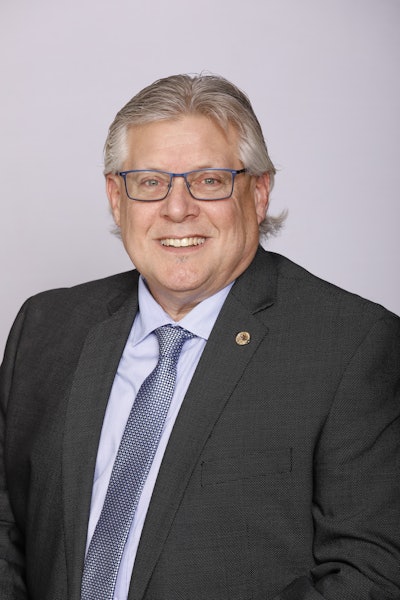
Editor's Note: This article is the first installment of two parts covering personal and organizational stories of hope in this ongoing series of articles regarding the opioid crisis in the construction industry. The next article in this series will feature additional voices who have helped launch National Recovery Week in New England. These stories and others of lived experience help break down stigma by instilling hope to help guide others toward a path leading to recovery.
The National Association of Home Builders (NAHB) began expressing concern about opioids to its members in 2015-2016. The Association of Union Constructors (TAUC) Spring 2018 edition of TAUC’s Construction User magazine was devoted to the opioid issue with the theme “Confronting the Opioid Crisis: What Contractors Can Do Today.”
I have been interviewing industry leaders willing to share their stories of how they recognized and responded to the growing opioid crisis. The industry leaders highlighted in this article were among the earliest to recognize the need to address opioids in the commercial and industrial sectors of the construction industry.
Stigma-Free
Kyle Zimmer; Director of Safety and Member Assistance Program
Local #478; International Union of Operating Engineers (IOUE; Hamden, CT)
I was introduced to Kyle Zimmer in August of 2016. I was working as Director of Risk Management for a union contractor in the Pacific Northwest. Kyle and I had both been invited to participate in a union training program exploring the issue of mental health, substance misuse, and suicide prevention. This meeting was in metro Seattle at the Union Hall for Local #302 of the International Union of Operating Engineers (IUOE).
Zimmer recognized in 2015 how the opioid crisis was adversely impacting the construction workforce. However, the turning point came during the 2016 Labor Assistance Professionals Annual Conference. The agenda included the financial and workforce impacts of opioids. Zimmer began partnering with Greg Williams with a national organization then known as Facing Addiction, which later merged with the National Council on Alcoholism and Drug Dependence Inc.
Williams and Zimmer subsequently met with the President of North America Building Trades Union (NABTU) Shawn McGarvey. NABTU enlisted the support of the Construction Center for Research and Training (then known as the Center to Protect Worker Rights) in the formation of the NABTU Opioid Task Force. Excellent resources on opioid risk reduction are available from CPWR and partner organization the National Institute of Occupational Health and Safety.
Zimmer later introduced Williams to Connecticut Attorney General William Tong. Zimmer recounts how this meeting was a turning point leading to an expanded response to the growing opioid crisis in the state. Today, Zimmer serves as an appointed member of the Connecticut Opioid Settlement Advisory Committee. In 2023 Zimmer was invited to represent the construction industry at a town hall hosted by the Brookings Institution on the economic impact of the opioid epidemic and its effect on labor supply availability.
The Local #478 Member Assistance Program (MAP) supports 3,200 members and 10,000 total lives, including family members and retirees. The MAP provides all-encompassing support for mental health, wellbeing, substance misuse, and treatment and recovery support for substance use disorder. Zimmer is quick to point out how important it is to provide a stigma-free encounter by being nonjudgemental while offering personal and confidential support. The MAP offers weekly support group meetings that are open to all who would like to participate. Member Assistance Program Coordinator Dwyer leads the weekly meetings and trained peers attend and participate as well.
The success of the Local #478 program led to the International starting a peer support training program named “It’s Time to Get Uncomfortable.” Zimmer credits Dwyer for helping to develop the peer training program. Approximately 90 peer leaders nationally have been trained in-house by Zimmer, Dwyer, and a cohort of instructors representing various disciplines who help teach peers how to help workers tackle the challenging lifestyle issues that can temporarily disrupt or derail careers. The goal of a MAP and peer support program is to help employees address lifestyle challenges and regain and retain employment.
A State-Wide Stand-Down
Marko Kaar; Director of Safety Operations
Bartlett Brainard Eacott (BBE; Bloomfield, CT)
One of the signatory contractors Zimmer partnered with is Bartlett Brainard Eacott. Marko Kaar is the longtime Director of Safety Operations for BBE. Kaar and Zimmer collaborated on opioid awareness and risk reduction initiatives back in 2016-2017. Both were active in promoting mental health awareness and suicide prevention. They jointly presented on suicide prevention and the opioid crisis at the December 2017 State of the Union Construction Industry Forum for The Association of Union Constructors. I joined Zimmer and Kaar as a co-presenter for a TAUC webinar in July 2020 on suicide prevention and the opioid crisis.
Zimmer and Kaar were active members in helping the Connecticut Construction Industries Association conduct a statewide opioid stand-down in Connecticut in 2019. This followed the successful first statewide opioid stand-down in Massachusetts in 2018. Kaar said the “state-wide stand-down was attended by over 500 employees at all levels of organizations around the state. Attendees included project owners, contractors, labor representatives, the Governor, Attorney General, and other state officials. What started as a conversation about opioids took a natural transition to the discussion of addiction, suicide, and mental health overall.”
Kaar reminisced how it was “truly humbling to have employees offer a look into their personal experiences (ten years in recovery, recent suicide in the family, injuries that led to opioid addiction), while offering sincere thanks, and in some cases, heartfelt hugs, for offering an opportunity to recognize the issues that so many face.”
Kaar is excited to see how “awareness around opioids, addiction, and naloxone has increased tremendously over the past 6-8 years. Contractor groups around the country are addressing the issues, and company owners are frequently speaking about their own commitment to opioid mitigation, many times based on personal experience.” To Kaar, “opioids are not just a safety issue, it impacts wellness, employee retention, and profitability as well. The numbers are upside down on so many sides of the discussion.”
Reviving Victims
Dr. John S. Gaal; Director, Worker Wellness
Missouri Works Initiative (St. Louis, MO)
 Dr. John S. Gaal; Director, Worker Wellness, Missouri Works InitiativeMissouri Works Initiative
Dr. John S. Gaal; Director, Worker Wellness, Missouri Works InitiativeMissouri Works Initiative
I invited Gaal to share the unique perspective of both he and his wife participating in reviving victims of opioid overdoses using naloxone (Narcan). Naloxone was approved by the US Food and Drug Administration as an over-the-counter medication for the reversal of opioid overdoses. A prior article in this series on opioids covered the Alliance for Naloxone Safety in the Workplace . Gaal joined Kaar and a number of other leaders as founding members of the ANSW.
Lightning Strikes Twice in Less Than 1 Year
By Dr. John S. Gaal
On October 22, 2022, my wife Mary and I boarded SWA flight 928 heading to Las Vegas for an international conference where I was scheduled to make a presentation. Less than 1 hour into our journey a woman’s scream came from across the aisle. Immediately, the flight attendants called out for assistance from any First Responders onboard. I jumped from my seat to find a young man passed out. Another man helped me carry this person in need of medical attention to the galley in the back of the plane. On my way back, I called out to Mary and asked that she “throw me the Narcan (naloxone) from her purse”.
Fortunately, the man who assisted carrying our victim was an Emergency Room doctor. He found no pulse or breathing. After “heated” discussions concerning a plan of action with the pilot and crew, I made some observations: sweating, vomit, unresponsiveness to a sternum rub, and pin point pupils. I suggested that this young man was in opioid overdose. And, that I had Narcan and was going to use it. Within 3 minutes of administering the Narcan, this young man came back to life…within 10 minutes he was back in his seat for the remainder of the flight.
Fast forward to September 26, 2023, Mary and I were performing our monthly service at an inner-city food shelter. Upon closing up for the evening, Mary noticed a crowd gathering on the parking lot. As she approached this area, Mary saw a young man passed out with another person leaning over him administering a nasal mist dose of Narcan. Mary served as the time keeper (knowing that if there was no response another shot would be required in 3 minutes). She also asked people gathered around if anyone was carrying Narcan. No less than 3 of the homeless people nearby offered their supply. It took 2 more doses of Narcan to revive this young man.
During COVID, Mary and I decided to get trained on what naloxone is and how to use it. After all, 5 of our friends have lost sons between the ages of 24-36 to the opioid crisis since 2016. It took less than 1 hour to learn to do this at a level we can now train others. I can honestly say that as a construction worker, I have taken standard first aid and CPR training many times over the past 40 years but never used it. A Chicago pharmacist recently published an article stating that Narcan is the new CPR.
The moral of these stories is that in order to help others, one must be in the right place…at the right time…with the right set of skills!
They highlight how three representative construction leaders recognized and responded to the challenges of opioids. Kyle Zimmer, Marko Kaar, and John Gaal are three of the earliest advocates for opioid risk reduction in the construction industry. In late 2016, after collaborating with Zimmer, I began expanding my education of workers, contractors, and labor leaders on the risks of opioids. Many other leaders have been early adopters that did not get acknowledged in this article. The combined efforts of all such contributors created the momentum being experienced today.
Finally, my ask of you is that you contact your US Representative in Congress to request her/his support of House Bill 3616 (which requires all commercial airlines to carry Narcan). In fact, Southwest Airlines decided to stock naloxone in late December 2023.




























